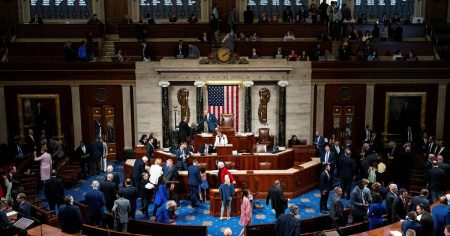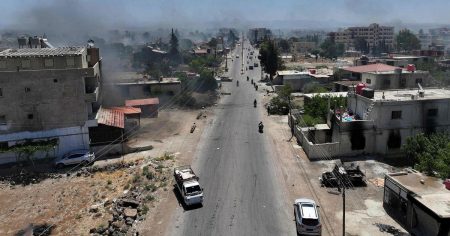The Perplexing Case of Taleb al-Abdulmohsen: An Uncharacteristic Profile in Extremism
The Magdeburg Christmas market attack, a horrific incident that claimed the lives of five individuals and injured over two hundred, has brought the alleged perpetrator, Taleb al-Abdulmohsen, into the spotlight. Al-Abdulmohsen, a 50-year-old physician who immigrated to Germany from Saudi Arabia in 2006, presents a confounding profile that defies easy categorization within traditional extremist frameworks. Media reports paint a picture of a man who identified as an atheist, vehemently criticized Islam, and even voiced support for the far-right Alternative for Germany (AfD) party. Simultaneously, he is described as a champion for Saudi women’s rights, actively working to assist them in escaping oppressive conditions. This paradoxical blend of seemingly contradictory ideologies raises critical questions about motivations and the efficacy of existing counter-terrorism strategies.
The incongruity of al-Abdulmohsen’s profile likely contributed to his low prioritization by security agencies, according to terrorism expert Hans Brun of King’s College London. Despite Saudi Arabia’s 2023 warning to German authorities about al-Abdulmohsen, a subsequent security assessment yielded no actionable intelligence. Brun suggests that al-Abdulmohsen’s eccentric and unpredictable behavior, coupled with his inconsistent ideological leanings, made it difficult for authorities to assess the level of threat he posed. This difficulty in categorizing individuals who fall outside established extremist narratives highlights a significant challenge for intelligence agencies tasked with identifying and mitigating potential threats.
Al-Abdulmohsen’s age also sets him apart from typical perpetrators of extremist violence. At 50 years old, he deviates from the demographic norm, which tends to skew younger. Brun notes that individuals in this age bracket more commonly assume supporting roles in extremist networks – recruiting, radicalizing, or providing logistical support – rather than directly engaging in violent acts themselves. This deviation from the conventional profile further complicates the task of understanding al-Abdulmohsen’s motivations and predicting his behavior.
The absence of any clear link to established extremist organizations further deepens the mystery surrounding the attack. Traditional categories of extremist violence in the West – left-wing radicals, right-wing radicals, and jihadists – do not readily accommodate al-Abdulmohsen’s apparent ideological ambiguity. While histories of violence exist within both religiously motivated and far-right ideologies, the lack of discernible organizational affiliation in this case creates an additional layer of complexity. This absence of a clear ideological framework makes it significantly more challenging to anticipate, prevent, and understand such acts of violence.
The Magdeburg attack underscores the evolving nature of extremist threats and the limitations of current approaches to counter-terrorism. The emergence of individuals like al-Abdulmohsen, whose profiles defy easy categorization and whose motivations remain opaque, necessitates a reassessment of existing strategies. Over-reliance on established typologies of extremism may lead to overlooking potentially dangerous individuals who fall outside conventional narratives. The challenge for security agencies is to develop more nuanced and adaptable approaches that can effectively identify and address the diverse and evolving landscape of extremist threats.
Unraveling the complexities of this case will require meticulous investigation and a willingness to consider unconventional explanations. Determining the true motivations behind the Magdeburg Christmas market attack is crucial not only for bringing closure to the victims and their families but also for refining counter-terrorism strategies to address the evolving nature of extremist threats. The perplexing case of Taleb al-Abdulmohsen serves as a stark reminder of the limitations of existing frameworks and the urgent need for more flexible and comprehensive approaches to understanding and preventing acts of extremist violence.














